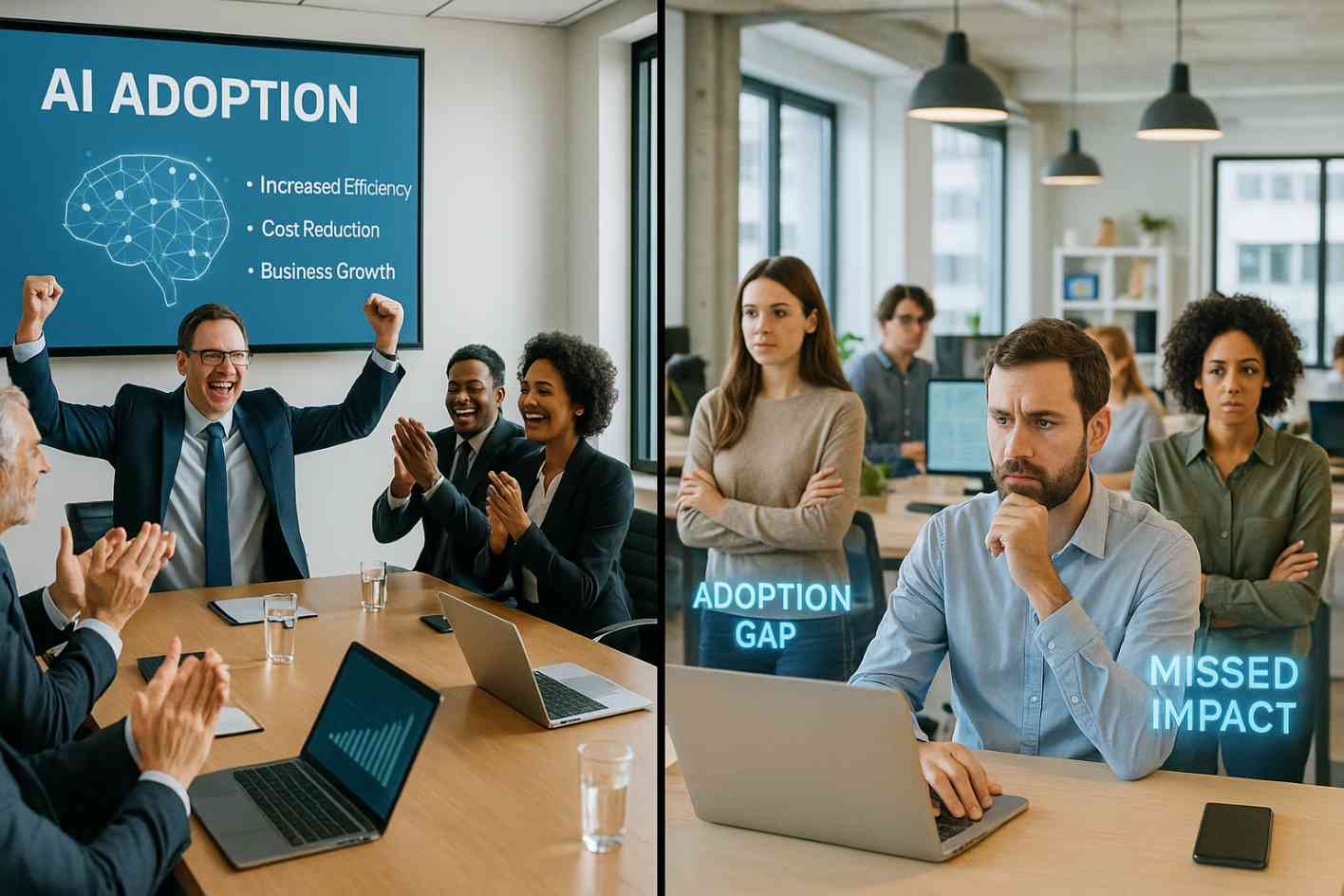AI is everywhere in boardroom conversations. Roadmaps are presented. Budgets approved. Slide decks promise productivity gains and bold transformation goals.
But here's the reality: many of those AI investments are already failing.
Not because the technology doesn't work. But because the people who need to use it aren't ready. Managers are still winging 1:1s. Employees are quietly disengaging. Leaders don't see the warning signs until adoption stalls.
That's the AI audit gap - the difference between what companies say they are ready for and what their workforce can actually deliver.
The Hidden Layer of AI Readiness
Most AI audits today focus on infrastructure, systems, and vendors. Important, yes. But irrelevant if the workforce isn't prepared to adapt.
As I wrote in The AI Roadmap Had 32 Slides. The People Strategy Had Four Lines, organisations are planning technology transformations in detail, while the people strategy is often reduced to a few bullet points. The result? Leaders underestimate the human impact and employees feel blindsided.
And as I argued in Why Most Managers Are Winging Their 1:1s, if your managers aren't equipped to have effective conversations with their people today, they're not equipped to lead teams through the complexities of AI adoptiontomorrow. That isn't just a leadership problem. It's an AI readiness problem.
Conversation Intelligence as a Workforce AI Audit
This is where conversation intelligence doubles as a workforce AI audit.
Patterns in 1:1 meetings reveal how prepared the organisation really is:
Key Questions Your Meeting Data Reveals:
- Are your people equipped to leverage AI to support their job and your organizational AI goals?
- Are employees raising concerns about automation, or staying silent?
- Is feedback clear and actionable, or vague and avoidant?
As I shared in How Your 1:1 Meeting Data Reveals Organizational Health Issues, these signals provide leading indicators of productivity, performance, and risk. Ignore them, and your AI adoption strategy is already compromised.
The Investment vs Capability Gap in AI Implementation
Right now, many companies are spending millions on AI platforms and consultants. But they are not investing in the human side of adoption.
The Result?
- Pilots succeed in the lab but collapse in the field
- Employees see AI as a threat rather than a tool
- Managers don't know how to answer the simple but critical question: "What does this mean for me?"
It's the same dynamic I explored in AI: The Gains, the Gaps, and the Hidden Costs. Gains on paper often come with hidden people risks that erode ROI.
This is the real commercial risk: AI spend becomes a sunk cost because the workforce isn't ready to use it.
Building AI-Ready Organizations Through Human Capability
An AI-ready organisation doesn't just buy technology. It builds human capability:
Essential Components:
- Managers confident enough to connect AI adoption to productivity and skills
- Employees who feel safe to ask questions and advocate for growth
- Leaders who use conversation data as a real-time implementation assessment, not just surveys or lagging HR metrics
This is why we built the Impact of AI Diagnostic. It identifies automation risk, workforce skill gaps, and readiness blind spots - and gives leaders a clear plan to close them.
Why AI Audit Accuracy Matters Now
AI is no longer a side project. It is already reshaping workflows, roles, and customer expectations.
Boards are asking about ROI. Regulators are circling. Investors want proof of impact. Yet as I warned in Jobs Are Disappearing – and We're Pretending Not to Notice, if leaders don't address the human side, AI will erode trust and trigger costly attrition.
Claiming AI readiness while projects fail is a reputational risk as much as a financial one. Saying you're ready without addressing the human layer is like declaring financial health without running an audit.
The winners will be the companies that close the AI audit gap - linking technology investments with workforce capability.
How GoFIGR Helps Close the AI Audit Gap
GoFIGR provides leaders with the missing layer of the AI audit:
For Managers:
Coaching tools that turn AI adoption into clear, confident conversations.
For Employees:
Safe ways to practice asking difficult questions about change and growth.
For Leaders:
Diagnostics that reveal whether the workforce is truly ready - not just whether the tech is installed.
This isn't another AI platform. It's the bridge between AI investment and human capability - the difference between AI projects that fail quietly and those that transform the business.
Ready to Close Your AI Audit Gap?
Don't let the gap between AI promises and workforce reality undermine your transformation efforts.
GoFIGR helps you identify where your AI readiness truly stands and provides the tools to bridge capability gaps before they impact your ROI.
Contact GoFIGR today to explore the Impact of AI Diagnostic and turn AI investment into sustainable workforce transformation.



